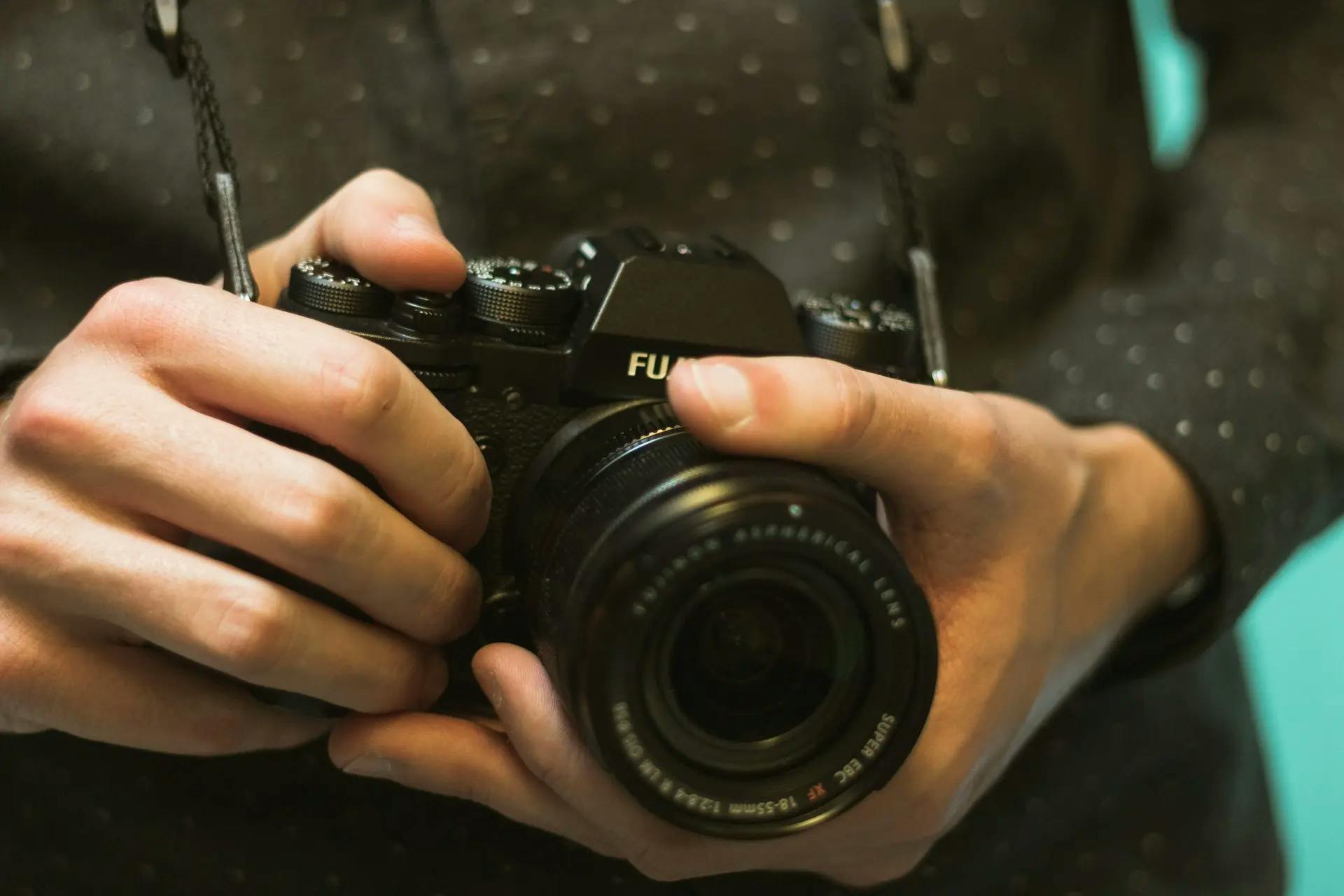Some of the links in this article may be affiliate links. We may earn a small commission if you decide to make a purchase through one of our partners, at no additional cost to you. This helps support our ongoing efforts to keep this site operating.
I've spent more time than I care to admit researching and analyzing nearly every Fujifilm camera released over the past several years to determine which take the crown in a few distinct categories.
Whether you’re shopping for your first camera or upgrading to something a bit more professional, you’ll find my top picks based on image quality, build quality, size/weight, autofocus performance, video capabilities, and more.
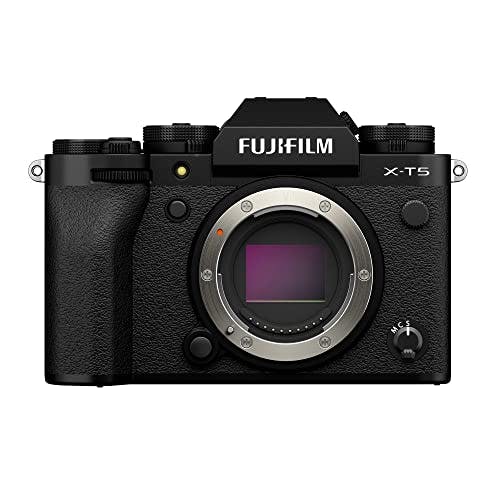
Fujifilm X-T5
My pick for the best overall Fujifilm camera has to be the Fujifilm X-T5. It is the perfect choice if you are looking for high performance in a compact body. The 40.2-megapixel sensor is a long-awaited boost from previous X-T models I've used. At this resolution, the X-T5 rivals some of the full-frame options from other brands, at a better price point in my opinion.
What I Liked:
- The 40.2-megapixel sensor provides incredible detail
- Improved video specs, including 6K and better IBIS
- Dial-focused controls, solid ergonomics, and plenty of control customization
What I Didn't Like:
- Autofocus performance lags behind some competitors and even its predecessor
After spending considerable time with the Fujifilm XT-5, my impressions are largely positive. From capturing the subtle gradations of dawn light on landscapes to the fast-paced action of street photography, the camera's 40MP sensor consistently delivers exceptional image quality. Even at high ISO settings, I was pleasantly surprised by the amount and quality of noise.
The IBIS system works great for handheld shots, ensuring sharp images where previously I might have faced blur. The autofocus, while a marked improvement, especially in still photography, sometimes struggles in video and fast-action scenarios. This is certainly an area I hope to see Fujifilm address in future updates.
The ergonomics and tactile experience of using the camera, with its old-school dials and intuitive layout, resonate with me as Fuji fan, although the grip could be more substantial for longer shooting sessions. That said, I don't think I have owned a camera I didn't prefer to add a third-party grip too anyways.
Comparing it with my experiences with full-frame cameras, while it doesn't always match up, especially in terms of depth of field and ultra-high ISO performance, the XT-5 brings me 95% of the way there.
Despite a few nitpicks, such as the desire for a deeper grip and the occassional accidental dial bump, the XT-5 has earned its place as my go-to Fujifilm camera for its blend of performance, portability, and the sheer joy of shooting.
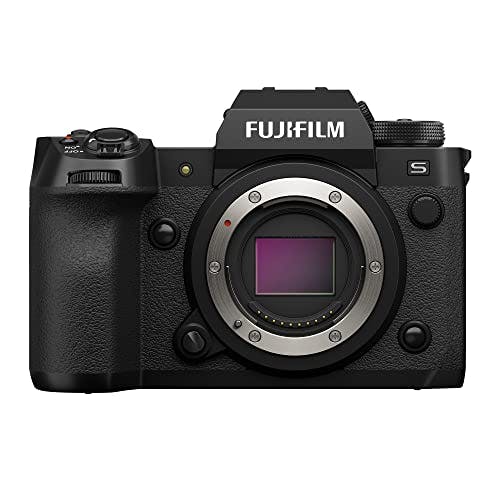
Fujifilm X-H2S
What I Liked:
- Fantastic image quality and beautiful color rendering
- Rapid burst shooting and quick autofocus, even in low light
- Impressive image stabilization and no overheating issues
What I Didn't Like:
- It took some time to get over not having as many dials for quick control
The Fujifilm X-H2S is my pick for those of you looking to explore both photography and videography. This hybrid camera offers a mix of high-speed performance and impressive image quality. With its 26.1-megapixel sensor and the ability to shoot at up to 40 frames per second using its electronic shutter, the Fuji X-H2S is tailored for capturing fast action without compromise. I found its autofocus system capable of tracking a variety of subjects with remarkable precision. It even has AI-based subject detection for animals, vehicles, and even human faces and eyes. The camera's 5-axis in-body image stabilization provided me up to 7 stops of shake reduction during testing, ensuring sharp images even in challenging settings.
Videographers will find the X-H2S particularly appealing for its capability to record 6.2K video at 30fps, and 4K video at up to 120fps, all while offering 10-bit 4:2:2 color internally. The introduction of F-Log2 and inclusion of Apple ProRes support, alongside the camera's ability to output footage to external recorders, positions the X-H2S as a versatile choice for high-quality video production. One of the other features that impressed me was the Camera to Cloud feature, made possible through a partnership with Frame.io.
While its high-speed shooting capabilities and video features are impressive, I was quickly reminded the X-H2S requires substantial storage and additional accessories such as cooling fans for extended video shoots to maximize the camera's performance. The cost of these add-ons, including high-capacity CFexpress cards and the optional vertical grip, could add up. Nevertheless, the Fujifilm X-H2S was my favorite option for a Fujifilm camera that excels in both stills and video.
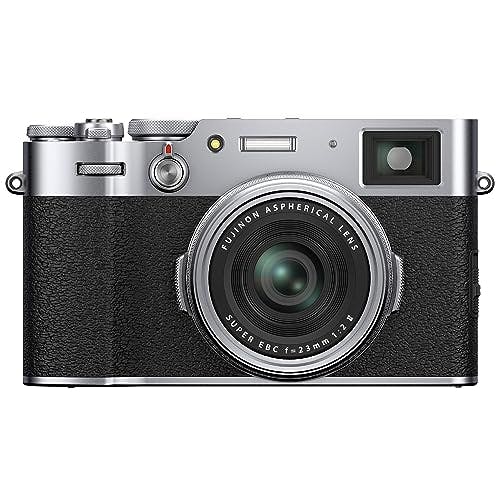
Fujifilm X-100V
What I Liked:
- Sleek design
- Fantastic image clarity and color rendering
- Versatile hybrid viewfinder is a joy to use
What I Didn't Like:
- Fixed lens can be limiting during some situations while traveling
- Weather-resistance requires lens filter ring and a filter
My favorite Fujifilm camera for travel is none other than the Fujifilm X-100V. When it came to the travel category, I primarily looked for portability with minimal sacrifice in quality, and the decision was pretty easy for me.
The Fujifilm X-100V has garnered quite a lot of attention recently, making it difficult to get ahold of in some markets. Its rangefinder-esque design and quality in both stills and video make it a compact beast.
While some may have to get used to have a fixed-lens nature of the camera, we found it pushed our creative boundaries on the road and our bags never felt lighter.
The camera delivered images with stunning clarity and color accuracy, making each of my test shots postcard-worthy. The fixed lens, a 23mm f/2, offers a versatile field of view equivalent to a 35mm on a full-frame camera, ideal for everything from sweeping landscapes to intimate street portraits. If you want more versatility, Fujifilm does offer 2 lens adapters for either a 28mm or 50mm equivalent lens. The hybrid viewfinder, a hallmark of the X-100 series, allows you to switch between an electronic and optical view, providing both the immediacy of digital and the classic feel of analog shooting. We found this flexibility invaluable in some of the more fast-paced environments during our travels.
While there are certainly other Fuji cameras on this list that excel in the video department, the X-100V still shoots decent 4K video up to 30 frames per second and 1080p up to 120fps for slow-motion effects if you're interested in filming a few memories during your travels.
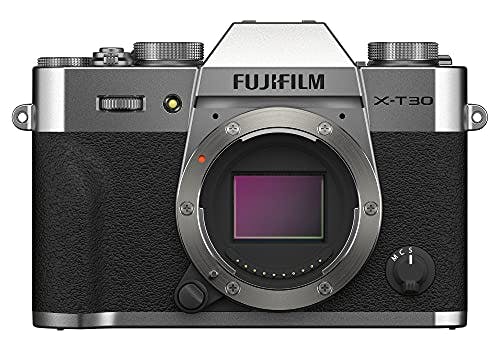
Fujifilm X-T30 II
What I Liked:
- Lightweight and compact body
- Nice intro to Fuji's color science and film simulations
- Shoots 4K at 30FPS and 1080p at up to 240FPS
What I Didn't Like:
- Autofocus struggled with fast-moving subjects
- Screen only tilts
- No in-body image stabilization
The Fujifilm X-T30 II is an excellent choice for beginners or enthusiasts seeking a budget-friendly option within the Fujifilm ecosystem. Despite being a slight refinement over its predecessor, we found the enhancements it brings to the table are significant enough, especially considering its price bracket. For photographers looking to delve into the Fujifilm interchangeable lens camera lineup without breaking the bank, the X-T30 II emerges as a compelling contender.
The camera has a 26.1-megapixel sensor, similar to many of X series cameras, capable of capturing images with stunning clarity and detail. The X-T30 II's compact design further enhances its appeal, making it an ideal companion for travel or daily photography adventures. Its size didn't detract from its performance, offering a blend of portability and power that is rare in cameras at this price point.
Video capabilities in the X-T30 II are noteworthy. It supports 4K video recording at 30 frames per second, which is plenty for most everyday scenarios. Additionally, we had a blast recording 240 frames per second at 1080p for buttery smooth slow-motion goodness.

Fujifilm X-100V
What I Liked:
- Minimal design wasn't too distracting in public
- Versatile hybrid viewfinder for quick adapting to scenes
- Perfect 35mm equivalent focal length for street photography
What I Didn't Like:
- I needed extra batteries for extended shoots
The Fujifilm X-100V finds itself back again on our list of the best Fuji cameras available today. This time, we're recommending it as the best Fujifilm camera for street photography. A lot of what made this a great travel camera still applies in this category and influenced our decision. The 23mm f/2 fixed lens is ideal for most street photographers, but of course you do have the option of using Fujifilm's X100 converters if you prefer a 28mm or 50mm equivalent focal length. Some of our team started their photography journey shooting street with film cameras, so they especially enjoyed the optical viewfinder with the option to switch to the EVF when necessary.
The battery life on the X-100V isn't fantastic, so we recommend picking up a few extra batteries if you plan to shoot for extended periods of time. You may also want to grab a lens filter adapter and a lens filter if you live in an area frequented by rain or snow to make this street photography set up 100% weather-resistant.
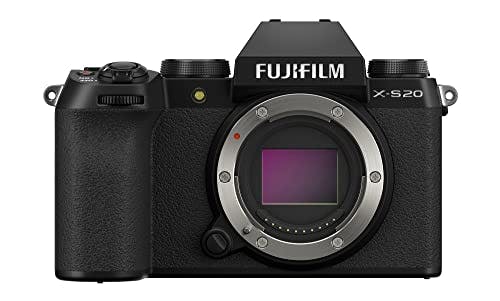
Fujifilm X-S20
What I Liked:
- Dedicated vlog mode with some useful features
- Shoots 6.2K30P with in-body stabiliatzion
- Advanced features for a mid-range Fuji camera
What I Didn't Like:
- It has the same as 26.1 megapixel sensor as the X-S10
- No weather sealing
If you're looking for the best Fuji camera for vlogging, we recommend the Fujifilm X-S20. While we would have loved to see more significant improvements in some areas of the camera compared to its predecessor, the 6.2K video and dedicated vlog mode pushed it ahead for us. The X-S lineup is Fujifilm's mid-range tier, so we understand there are sacrifices to be made. However, some important omissions like weather sealing or dual SD card slots might be a dealbreaker for some.
Turning the mode dial to Vlog on the Fujifilm X-S20 lets vloggers quickly access a touch screen menu with useful vlog-focused options such as self-timer, image stabilization modes, face/eye detection toggle, high-speed recording, and Product Priority/Background Defocus modes. The Product Priority mode basically disables the face/eye detection and turns on continuous autofocus so the camera can focus on products that are brought into frame. Our team found that this is only valuable for specific use cases, so should be disabled most of the time.
The other unique vlog mode setting is Background Defocus mode. This simply switches the camera to use the widest aperture available. Again, our team found while this may prove useful for less tech-savvy individuals, it is best to toggle it off once you're done using it. With these modes, it's easy to see Fujifilm's attempt to bring in a wider audience of vloggers that aren't quite interested in learning their camera in and out, but still want to look good.
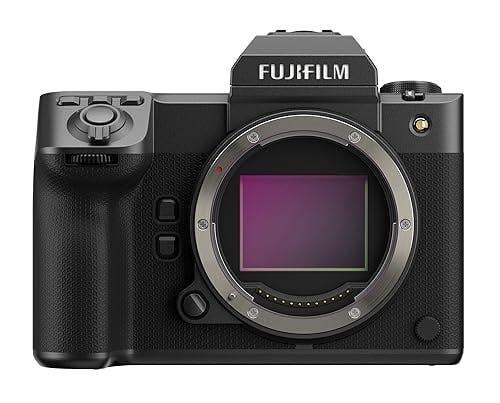
Fujifilm GFX 100 II
What I Liked:
- Incredible 102 megapixel image sensor for insane resolution
- Video recording up to 8K30P
- Enhanced sensor-shift image stabilization
What I Didn't Like:
- The price tag. This is NOT a cheap camera.
- Remote release port is on the left side where most L-plates block
It doesn't get much better (or more expensive) than the Fujifilm GFX 100 II. If you're in the market for the best Fujifilm medium-format camera, the GFX 100 II should be right at the top of the list.
The mind-blowing 102 megapixel image sensor is 1.7 times larger than what you'll find in a full frame camera. Since Fujifilm doesn't produce full frame cameras, the leap from the APS-C sensors in the X series to the GFX series is incredibly massive.
If that wasn't enough, the GFX 100 II's pixel shift multi-shot feature enables photographers to capture a 400 megapixel image. Whoa.
It features a high-resolution OLED viewfinder, three-way articulated screen, and supports both CF Express and SD cards. The camera boasts enhanced sensor-shift stabilization up to eight stops, depending on the lens used.
Additionally, it offers versatile video capabilities, including 4K/60p, 8K/30p, FHD/120p 4:2:2 10-bit internal recording, with advanced subject detection algorithms. With its medium format, the GFX 100 II delivers exceptionally detailed images and has been recognized for pushing the boundaries of speed and handling in its class.
